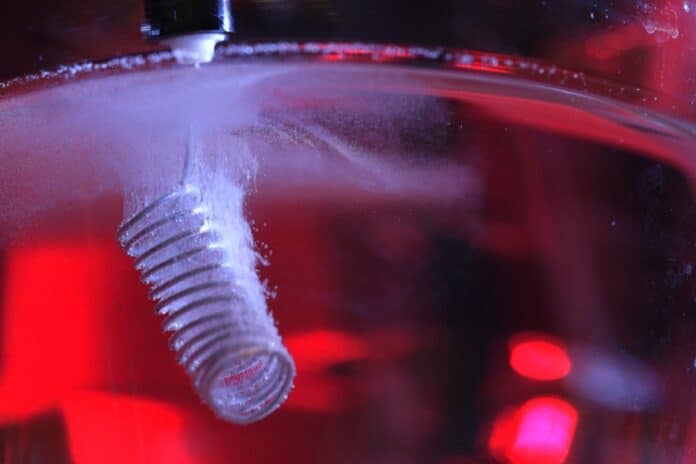The MIT group is working on an electrochemical device that recovers and transforms collected carbon dioxide into a usable product. Unlike fossil-fuel-derived steam, this integrated system could be powered entirely with renewable electricity. The concept involves an electrode that fits into existing carbon-capture solutions, allowing electrons to flow onto the reactive form of carbon dioxide and convert it into a product using water protons. This process could also capture and convert carbon dioxide into a solid carbonate form.
Researchers at MIT are investigating carbon-capture technologies to help decarbonize the most stubborn industrial emitters, such as the steel, cement, and chemical sectors.
Technologies that can capture and convert carbon emissions into forms that feed into the production process could help reduce overall emissions from these sectors. However, an experimental technology that captures and converts carbon dioxide does so in two independent processes requiring huge quantities of energy.
The study aims to merge the two processes into a more energy-efficient system that might run on renewable energy to capture and convert carbon dioxide from concentrated industrial sources.
The researchers discover how carbon dioxide may be captured and converted in a single electrochemical process. An electrode attracts carbon dioxide from a sorbent and converts it into a reduced, reusable form. The more pure carbon dioxide that comes into contact with the electrode, the better the electrode’s ability to catch and convert the molecule. Knowledge of this main driver, or “active species,” can help scientists tune and optimize similar electrochemical devices to absorb and transform carbon dioxide in an integrated process.
The new study suggests that electrochemical systems, although unsuitable for very dilute environments like air, are well-suited for highly concentrated emissions from industrial processes, especially those without a clear renewable alternative.
Study author Betar Gallant, the Class of 1922 Career Development Associate Professor at MIT, said, “We can and should switch to renewables for electricity production. But deeply decarbonizing industries like cement or steel production is challenging and will take longer. Even if we get rid of all our power plants, we need solutions to deal with the emissions from other industries in the shorter term before we can fully decarbonize them. That’s where we see a sweet spot, where something like this system could fit.”
Carbon-capture technologies use large retrofits to capture emissions from power plants and manufacturing facilities’ smokestacks. These technologies funnel emissions into chambers filled with a “capture” solution, a mix of amines that chemically bind with carbon dioxide. This creates a stable form that can be separated from the rest of the flue gas. The captured carbon dioxide is then heated to a high temperature, usually in the form of steam produced from fossil fuels. The gas can then be pumped further processed into chemicals or fuels or converted into storage tanks or underground.
The researcher said, “Carbon capture is a mature technology in that the chemistry has been known for about 100 years. However, it requires huge installations and is expensive and energy-intensive. We want technologies that are more modular and flexible and can be adapted to more diverse sources of carbon dioxide. Electrochemical systems can help to address that.”
She added, “We showed that this electrochemical process was feasible in very early concepts. Since then, other studies have focused on using this process to attempt to produce useful chemicals and fuels. But there’s been inconsistent explanations of how these reactions work, under the hood.”
Researchers used a magnifying glass in the new study to study the specific reactions driving an electrochemical process. They created amine solutions resembling industrial capture solutions for extracting carbon dioxide from flue gas. They altered properties like pH, concentration, and amine type, then ran each solution past a silver electrode. The concentration of carbon monoxide converted was measured and compared to other solutions to determine the most influential parameter on carbon monoxide production.
They discovered that it differed from the type of amine used first to capture the most important carbon dioxide, as many have suspected. It was the concentration of single, free-floating carbon dioxide molecules that avoided interacting with amines but remained in the solution. This “solo-CO2” concentration determined the amount of carbon monoxide generated.
The researcher said, “We found that it’s easier to react to this ‘solo’ CO2 compared to CO2 that the amine has captured. This tells future researchers that this process could be feasible for industrial streams, where high carbon dioxide concentrations could efficiently be captured and converted into useful chemicals and fuels.”
Sunway University in Malaysia funded the study.
Journal Reference:
- Graham Leverick, Elizabeth M. Bernhardt,et al. Uncovering the Active Species in Amine-Mediated CO2 Reduction to CO on Ag. ACS Catalysis. DOI: 10.1021/acscatal.3c02500
